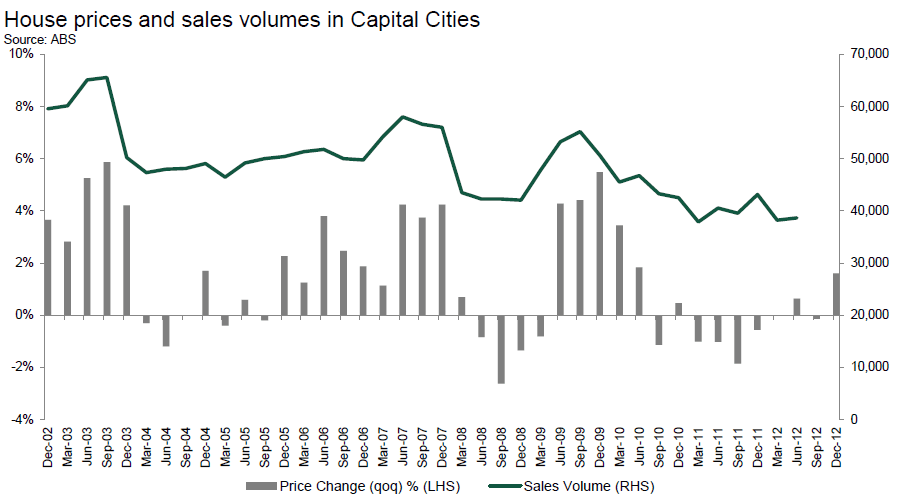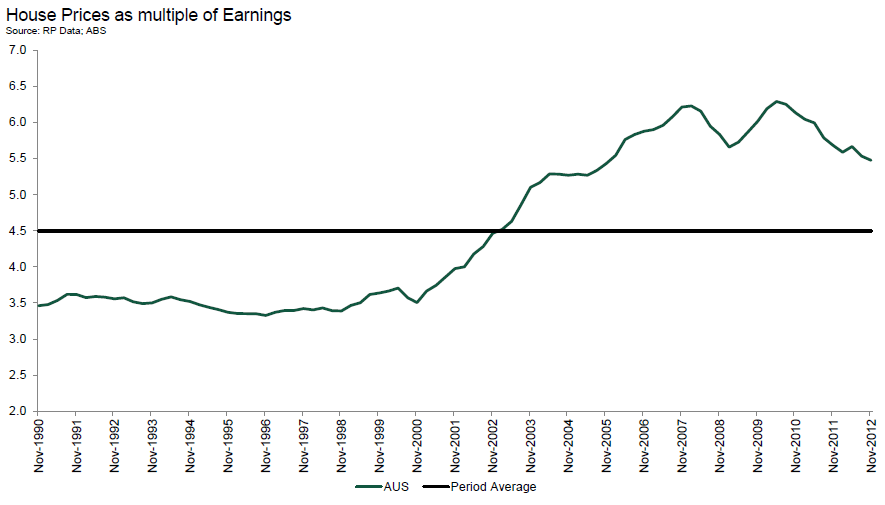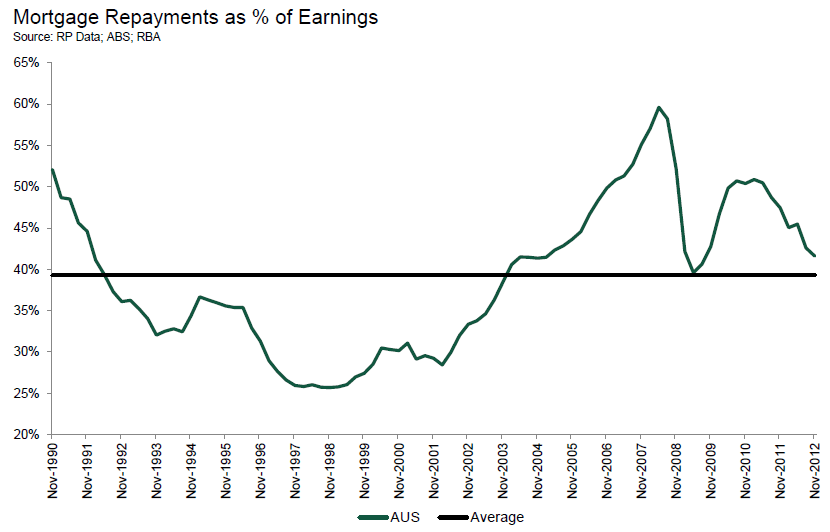
The Housing Industry Association (HIA) has today released a Research Note entitled “Perspectives on Australian House Prices”, which attempts to review the state of the housing market with a view to establishing the likely future direction of prices.
The HIA first plots house prices and the number of house transactions between 2002 and 2012 across the state capital cities, noting that both prices growth and turnover have been weak over the past couple of years, with sales volumes also trending downwards over the past decade. By way of comparison, around 240,000 transactions occurred in 2002, compared to just 160,000 in 2012 (see next chart).

The HIA then plots house prices as a multiple against average weekly earnings, noting that:
On average, house prices have been a multiple of about 4.5 times average annual earnings (as shown by the grey line). Over the last decade, the ratio has been consistently higher than this, particularly around early 2008 and again in mid-2010. Price falls followed in both cases and the ratio currently stands at about 5.7. This is higher than the long term average, but the gap is not of hugely significant magnitude. Accordingly, the most likely scenario is that prices will remain largely stable with no sizeable upward or downward movement taking place.

Finally, the HIA plots mortgage repayments as a % of earnings, noting that:
…since 1990, average mortgage repayments have accounted for about 40 per cent of earnings. There has been considerable fluctuation around this figure. The ratio bottomed out during the late 1990s, with brisk growth in house prices following. These rises combined with interest hikes brought the ratio to a peak in mid-2008. Falling house prices and sharp interest rate cuts then caused the ratio to fall considerably. Currently, the ratio is slightly above its long term average. This suggests that the relationship between earnings, interest rates and house prices is balanced and consistent with stability in the market. Accordingly, any large price swings are probably unlikely in the near future.

The HIA concludes its assessment arguing that Australian housing market is in a “steady-state”, whereby significant price movements are unlikely:
Overall, the analysis presented here indicates that the Australian housing market is relatively weak by historical standards in terms of transaction volumes and anaemic price growth over recent months. This state of affairs underlines one of the key features of housing markets generally, whereby low levels of transaction and turnover tend to accompany periods of subdued prices. Consequently, the return of sustainable price growth to the market would add welcome fuel to activity in the residential construction sector.
Our analysis also sought to establish whether any significant price movements were likely in the market going forward. The relationship between earnings and house prices is broadly consistent with its long term tendency which suggests that any significant movement in prices is unlikely. This is corroborated by our comparison of mortgage repayments and earnings, which are also in line with the long term trend.
In my view, the HIA’s assessment is justified if one believes that the Australian economy is also in a “steady-state”. The obvious fly in the ointment is a possible disorderly unwinding of the mining boom (i.e. sharp falls in both commodity prices and mining-related investment), which would adversely affect incomes, employment, growth, government finances, and potentially bank liquidity.
Full HIA report below.

